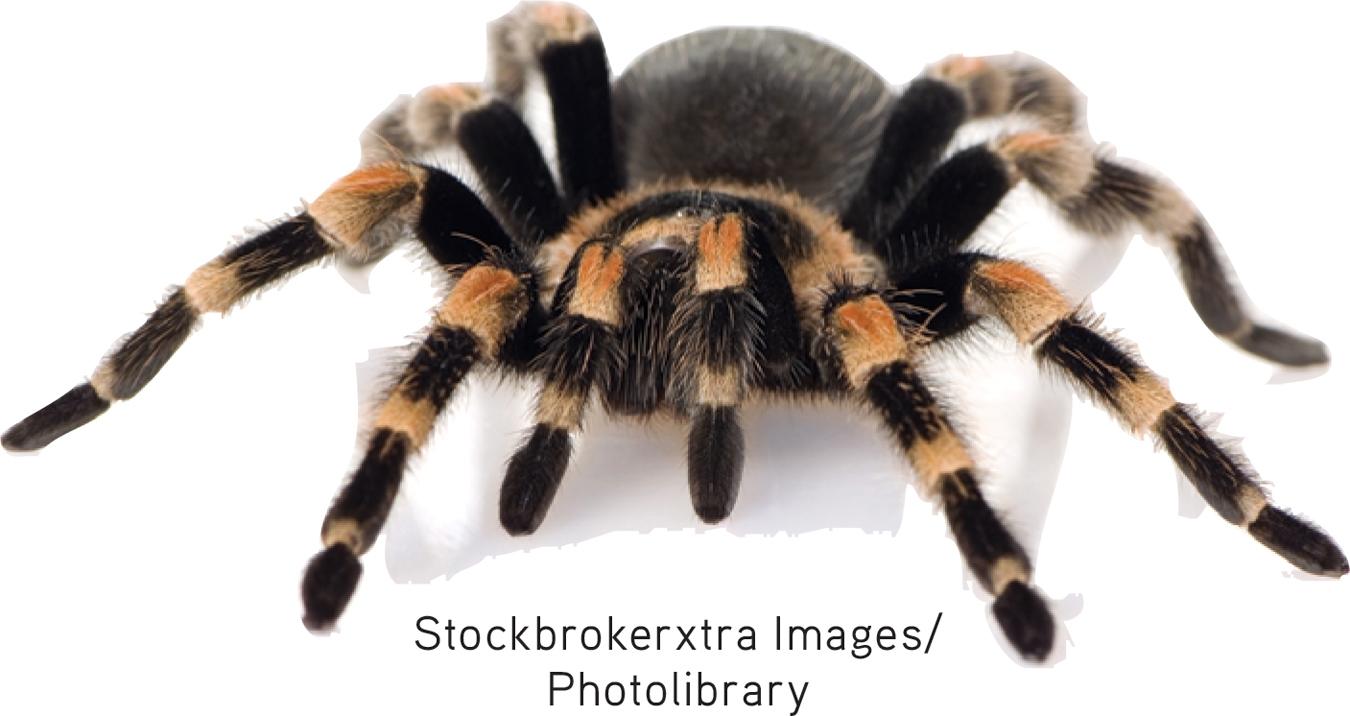5.3 Contemporary Views of Classical Conditioning
KEY THEME
Contemporary learning researchers acknowledge the importance of both cognitive factors and evolutionary influences in classical conditioning.
KEY QUESTIONS
How has the involvement of cognitive processes in classical conditioning been demonstrated experimentally?
What is meant by the phrase “the animal behaves like a scientist” in classical conditioning?
How do taste aversions challenge the basic conditioning principles, and what is biological preparedness?
The traditional behavioral perspective holds that classical conditioning results from a simple association of the conditioned stimulus and the unconditioned stimulus. Mental or cognitive processes such as thinking, anticipating, or deciding were not needed to explain the conditioning process. However, according to the cognitive perspective (see Chapter 1), mental processes as well as external events are important components in the learning of new behaviors. In the next section, we’ll look at research on cognitive processes in classical conditioning.
Cognitive Aspects of Classical Conditioning
RELIABLE SIGNALS
In a series of experiments, learning theorist Robert Rescorla demonstrated that classical conditioning involves more than learning the simple association of two stimuli. In a classic study, one group of rats heard a tone (the conditioned stimulus) that was paired 20 times with a brief electric shock (the unconditioned stimulus). A second group of rats experienced the same number of tone–

Pavlovian conditioning is a sophisticated and sensible mechanism by which organisms represent the world. Our current understanding of Pavlovian conditioning leads to its characterization as a mechanism by which the organism encodes relationships between events in the world. The conditioned stimulus and the unconditioned stimulus are simply two events, and the organism can be seen as trying to determine the relationship between them.
—Robert A. Rescorla (1997)
According to Rescorla (1988), classical conditioning depends on the information the conditioned stimulus provides about the unconditioned stimulus. For learning to occur, the conditioned stimulus must be a reliable signal that predicts the presentations of the unconditioned stimulus. For the first group of rats, that was certainly the situation. Every time the tone sounded, a shock followed. But for the second group, the tone was an unreliable signal. Sometimes the tone preceded the shock, and sometimes the shock occurred without warning.
Rescorla concluded that the rats in both groups were actively processing information about the reliability of the signals they encountered. Rather than merely associating two closely paired stimuli, as Pavlov suggested, the animals assess the predictive value of stimuli. Applying this interpretation to classical conditioning, we can conclude that Pavlov’s dogs learned that the bell was a signal that reliably predicted that food would follow.
According to this view, animals use cognitive processes to draw inferences about the signals they encounter in their environments. To Rescorla (1988), classical conditioning “is not a stupid process by which the organism willy-nilly forms associations between any two stimuli that happen to co-occur.” Rather, his research suggests that “the animal behaves like a scientist, detecting causal relations among events and using a range of information about those events to make the relevant inferences” (Rescorla, 1980). Put simply, classical conditioning seems to involve learning the relationships between events (Rescorla, 1988, 2003).

Evolutionary Aspects of Classical Conditioning
BIOLOGICAL PREDISPOSITIONS TO LEARN
According to Darwin’s theory of evolution by natural selection, both the physical characteristics and the natural behavior patterns of any species have been shaped by evolution to maximize adaptation to the environment. Thus, just as physical characteristics vary from one species to another, so do natural behavior patterns. Some psychologists wondered whether an animal’s natural behavior patterns, as shaped by evolution, would also affect how it learned new behaviors, especially behaviors important to its survival.
According to traditional behaviorists, the general principles of learning applied to virtually all animal species and all learning situations. Thus, they argued that the general learning principles of classical conditioning would be the same regardless of the species or the response being conditioned. However, in the 1960s, some researchers began to report “exceptions” to the well-established principles of classical conditioning (Lockard, 1971; Seligman, 1970). As you’ll see in this section, one important exception involved a phenomenon known as a taste aversion. The study of taste aversions contributed to a new awareness of the importance of the organism’s natural behavior patterns in classical conditioning.
TASTE AVERSIONS AND CLASSICAL CONDITIONINGSPAGHETTI? NO, THANK YOU!
A few years ago, our friend Tom ate a large plateful of spaghetti at a highly rated Italian restaurant. But in the middle of the night, Tom came down with a nasty stomach virus. As a result, Tom developed a taste aversion—he avoided eating spaghetti and felt queasy whenever he smelled tomato sauce.
taste aversion
A classically conditioned dislike for and avoidance of a particular food that develops when an organism becomes ill after eating the food.
Such learned taste aversions are relatively common. Our students have told us about episodes of motion sickness, morning sickness, or illness that resulted in taste aversions to foods as varied as cotton candy, strawberries, and chicken soup. In some cases, a taste aversion can persist for years.
At first glance, it seems as if taste aversions can be explained by classical conditioning. In Tom’s case, a neutral stimulus (spaghetti) was paired with an unconditioned stimulus (a stomach virus), which produced an unconditioned response (nausea). Now a conditioned stimulus, the spaghetti sauce by itself, elicited the conditioned response of nausea.
But notice that this explanation seems to violate two basic principles of classical conditioning. First, the conditioning did not require repeated pairings. Conditioning occurred in a single pairing of the conditioned stimulus and the unconditioned stimulus. Second, the time span between these two stimuli was several hours, not a matter of seconds. Is this possible? The anecdotal reports of people who develop specific taste aversions seem to suggest it is. But such reports lack the objectivity and systematic control that a scientific explanation of behavior requires.
Enter psychologist John Garcia, who demonstrated that taste aversions could be produced in laboratory rats under controlled conditions (Garcia & others, 1966). Garcia’s procedure was straightforward. Rats first drank saccharin-flavored water (the neutral stimulus). Hours later, the rats were injected with a drug (the unconditioned stimulus) that produced gastrointestinal distress (the unconditioned response). After the rats recovered from their illness, they refused to drink the flavored water again. The rats had developed a taste aversion to the saccharin-flavored water, which had become a conditioned stimulus.
MYTH  SCIENCE
SCIENCE
Is it true that you can develop a long-lasting aversion to a food or beverage if you get sick after eating or drinking it?
At first, many psychologists were skeptical of Garcia’s findings because they seemed to violate the basic principles of classical conditioning (Davis & Riley, 2010). Several leading psychological journals refused to publish Garcia’s research, saying the results were unconvincing or downright impossible (Garcia, 1981, 2003). But Garcia’s results have been replicated many times. In fact, later research showed that taste aversions could develop even when a full 24 hours separated the presentation of the flavored water and the drug that produced illness (Davis & Riley, 2010).
Conditioned taste aversions also challenged the notion that virtually any stimulus can become a conditioned stimulus. As Pavlov (1928) wrote, “Any natural phenomenon chosen at will may be converted into a conditioned stimulus … any visual stimulus, any desired sound, any odor, and the stimulation of any part of the skin.” After all, Pavlov had demonstrated that dogs could be classically conditioned to salivate to a ringing bell, a ticking metronome, and even the sight of geometric figures.

But if this were the case, then why didn’t Tom develop an aversion to other stimuli he encountered between the time he ate the spaghetti and when he got sick? Why was it that only the spaghetti sauce became a conditioned stimulus that triggered nausea, not the restaurant, the tablecloth, or his dining companions?
Contrary to what Pavlov suggested, Garcia and his colleagues demonstrated that the particular conditioned stimulus that is used does make a difference in classical conditioning (Garcia & Koelling, 1966). In another series of experiments, Garcia found that rats did not learn to associate a taste with a painful event, such as a shock. Nor did they learn to associate a flashing light and noise with illness. Instead, rats were much more likely to associate a painful stimulus, such as a shock, with external stimuli, such as flashing lights and noise. And rats were much more likely to associate a taste stimulus with internal stimuli—the physical discomfort of illness. Garcia and Koelling (1966) humorously suggested that a sick rat, like a sick person, speculates, “It must have been something I ate.”
Why is it that certain stimuli are more easy to associate than others? One factor that helps explain Garcia’s results is biological preparedness—the idea that an organism is innately predisposed to form associations between certain stimuli and responses (Freeman & Riley, 2009). If the particular stimulus and response combination is not one that an animal is biologically prepared to associate, then the association may not occur or may occur only with great difficulty (see the In Focus box, “Evolution, Biological Preparedness, and Conditioned Fears: What Gives You the Creeps?”).
biological preparedness
In learning theory, the idea that an organism is innately predisposed to form associations between certain stimuli and responses.
When this concept is applied to taste aversions, rats (and people) seem to be biologically prepared to associate an illness with a taste rather than with a location, a person, or an object. Hence, Tom developed an aversion to the spaghetti sauce and not to the fork he had used to eat it. Apparently, both humans and rats are biologically prepared to learn taste aversions relatively easily. Thus, taste aversions can be classically conditioned more readily than can more arbitrary associations, such as that between a ringing bell and a plate of food.
Associations that are easily learned may reflect the evolutionary history and survival mechanisms of the particular animal species (Freeman & Riley, 2009). For example, rats in the wild eat a wide variety of foods. If a rat eats a new food and gets sick several hours later, it’s likely to survive longer if it learns from this experience to avoid that food in the future (Kalat, 1985; Seligman, 1970).
IN FOCUS
Evolution, Biological Preparedness, and Conditioned Fears: What Gives You the Creeps?
Do these photographs make you somewhat uncomfortable?
A phobia is an extreme, irrational fear of a specific object, animal, or situation. It was once believed that all phobias were acquired through classical conditioning, as was Little Albert’s fear of the rat and other furry objects. But many people develop phobias without having experienced a traumatic event in association with the object of their fear. Obviously, other forms of learning, such as observational learning, are involved in the development of some fears (Bruchey & others, 2010).

When people do develop conditioned Images/Jupiterimages fears as a result of traumatic events, they are more likely to associate fear with certain stimuli rather than others. Erv, not surprisingly, has acquired a conditioned fear response to the “killer attic.” But why doesn’t Erv shudder every time he hears a lawn mower or sees a ladder, the clothes he was wearing when he got trapped, or his can of oil?
Psychologist Martin Seligman (1971) noticed that phobias seem to be quite selective. Extreme, irrational fears of snakes, spiders, heights, and small enclosed places (like Erv and Fern’s attic) are relatively common. But very few people have phobias of stairs, ladders, electrical outlets or appliances, or sharp objects, even though these things are far more likely to be associated with accidents or traumatic experiences.
Seligman proposed that humans are biologically prepared to develop fears of objects or situations—such as snakes, spiders, and heights—that may once have posed a threat to humans’ evolutionary ancestors. As Seligman (1971) put it, “The great majority of phobias are about objects of natural importance to the survival of the species.” According to this view, people don’t commonly develop phobias of knives, stoves, or cars because they’re not biologically prepared to do so.
Support for this view is provided by early studies that tried to replicate Watson’s Little Albert research. Elsie Bregman (1934) was unable to produce a conditioned fear response to wooden blocks and curtains, although she followed Watson’s procedure carefully. And Horace English (1929) was unable to produce a conditioned fear of a wooden duck. Perhaps we’re more biologically prepared to learn a fear of furry animals than of wooden ducks, blocks, or curtains!
More recent experimental evidence supports an evolutionary explanation for the most common phobias (Coelho & Purkis, 2009; Öhman, 2009). People seem to be biologically prepared to rapidly detect snakes and spiders. Several studies have shown that people are faster at detecting a single snake or spider image among photos of flowers or other non-threatening objects than they are at detecting a single flower image among pictures of snakes or spiders (see LoBue, 2010; LoBue & others, 2010). One study showed that monkeys also more quickly detect images of a snake than of a flower (Shibasaki & Kawai, 2009). And, both humans and monkeys acquire conditioned fear responses to pictures of snakes and spiders more rapidly than they do to neutral objects, like mushrooms and flowers (Öhman & Mineka, 2001, 2003).

Are such findings the result of frightening experiences with snakes or spiders? Or perhaps learned responses to the knowledge that snakes and spiders are dangerous? Apparently not. Research has shown that preschoolers and even infants are faster at spotting images of snakes and spiders among photos of flowers, frogs, or caterpillars (LoBue, 2010; LoBue & DeLoache, 2008, 2010). They are also more likely to associate snakes and spiders with fearful stimuli, like angry faces or voices (DeLoache & LoBue, 2009; Rakison, 2009).
MYTH  SCIENCE
SCIENCE
Is it true that people are more likely to fear snakes, spiders, and heights than more realistic threats like speeding cars or lightning?
Öhman and Mineka (2003) suggest that because poisonous snakes, reptiles, and insects have been associated with danger throughout the evolution of mammals, there is an evolved “fear module” in the brain that is highly sensitized to such evolutionarily relevant stimuli. According to this explanation, individuals who more rapidly detected such dangerous animals would have been more likely to learn to avoid them and survive to reproduce and pass on their genes to future generations (Coelho & Purkis, 2009; Öhman & others, 2007). For more on how evolved brain mechanisms might be involved in fearful responses, see Chapter 8.
That different species form some associations more easily than others also probably reflects the unique sensory capabilities and feeding habits that have evolved as a matter of environmental adaptation. Bobwhite quail, for instance, rely primarily on vision for identifying potential meals. In contrast, rats have relatively poor eyesight and rely primarily on taste and odor cues to identify food. Given these species differences, it shouldn’t surprise you that quail, but not rats, can easily be conditioned to develop an aversion to blue-colored water—a visual stimulus. On the other hand, rats learn more readily than quail to associate illness with sour water—a taste stimulus (Wilcoxon & others, 1971). In effect, quail are biologically prepared to associate visual cues with illness, while rats are biologically prepared to associate taste cues with illness.

University of Sydney ecologist Stephanie O’Donnell and her colleagues (2010) successfully created a conditioned taste aversion to teach quolls to avoid eating cane toads. They fed young quolls tiny, dead cane toads that were laced with a nausea-inducing drug. The juvenile cane toads, weighing less than a tenth of an ounce, did not contain enough poison to kill the quolls, but the drug made the quolls extremely nauseous. Did a taste aversion develop? Yes, and the quolls with taste aversions survived up to five times longer in the wild than control group quolls who were not exposed to the sickness-inducing toads.
Ultimately, the scientists hope to develop ways to produce cane-toad taste aversions in entire populations of quolls and other endangered species whose survival is imperiled by their habit of munching on the poisonous toads. One idea is to spread drug-laced toad carcasses over a wide area, possibly from the air by plane or helicopter.
Taste aversion research emphasizes that the study of learning must consider the unique behavior patterns and capabilities of different species. As the result of evolution, animals have developed unique forms of behavior to adapt to their natural environments (Bolles, 1985). These natural behavior patterns and unique characteristics ultimately influence what an animal is capable of learning—and how easily it can be conditioned to learn a new behavior.
Test your understanding of Introduction to Learning and Classical Conditioning with
 .
.